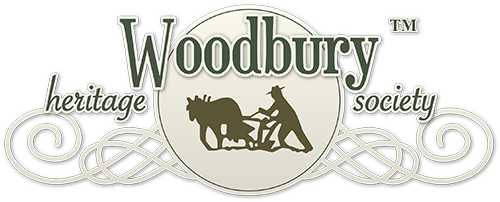Laura’s Story
By Laura W. Berglund
Laura Berglund is a former Afton resident who writes post-depression stories of her childhood living in rural southern Minnesota. Her husband, Harold (other than two years in the army), has spent his entire life in the St. Croix Valley/Afton area, never living more than 12 miles from his birthplace.
Money was tight in the 1930s. As a result, mom squeaked out what she could from her “egg money” to spend a on a rare trip to town to get the few items that the farm did not produce. There was no such thing as buying something because she merely wanted it. She had to need it before making a purchase. Therefore, she wore the same winter coat throughout my childhood. She never bought a new dress, and she always wore a protective apron. When completely worn, she would buy just enough fabric to make another. There was no concern for the style. As usual, the trick was to save money. Therefore, buttons were not thrown out, thread did not always match perfectly, zippers would be recycled to a new garment and any extra fabric was saved for a future sewing venture. She taught us many ways to save even a penny. That penny might then appear on the table for me to give to church on Sunday. Of course, that penny was also half my wages for doing my assigned chores.
As children, we did not feel deprived. Our friends also wore “homemade” dresses. However, mom did buy our underclothes and, of course our shoes. I believe I have written previously that we needed to earn our winter coats by raising our own sheep and selling the wool. As a result, those coats were worn only for “good” and our hand-me-down coats were worn for outdoor activities on the farm.
We were fortunate to live on that farm because we always had healthful food. Never was I admonished for eating too much, there was always plenty, and it was always very good. I have never been able to emulate my mother’s ability to cook – and she did it all on the old wood burning stove that was used all day, every day.
In an effort to give individual attention to each of us while shopping, my parents did not take all of us to town at the same time. Therefore, they had a rotation basis they used to give each of us a turn. Mom would give us a couple of pennies to spend in the “dime store”. It was there I learned to be a deliberate shopper because it was enough to spend on anything worthwhile and was usually exchanged for a small bag of candy.
I never knew what prompted it, but there were times when dad would pick us up from school and take us to the ice cream store. Wow! That was a big treat and caused a big discussion as to what flavor we should choose. It actually was not a big deal because there were only three flavors from which to choose: vanilla, chocolate or maple nut.
For years the dime store (Woolworth’s or Kresge’s) was the place to go if you were a kid. They offered toys, some clothing items, candy, and gift items. This was a true even years later when I was a young mother. I still have some hankies which were lovingly given to me by my sons. They would get on their bikes before Mother’s Day and ride to the dime store in search for affordable gift for their mom. Sure enough, on Mother’s Day I would get the lovely Mother’s Day hankie. I still have two of them in my bureau drawer – I found them to be too precious to use.
When buying several items in a department store, the clerk (now known as an associate) would present you with a hand-written receipt. This time-consuming practice went by the wayside with the coming of cash registers and finally with computers. Shopping was much slower paced in those days. Clerks spent much of their time showing and demonstrating their merchandise. Presently, if you need a new lipstick, you go to a place like Wal-Mart, pick it out of the bin, pay for it and take it home. In the 1930s a clerk would dutifully ask what color you need. Then she would seek through her bins, find several, bring them to the counter and begin showing one at a time, hoping one would suit your purpose. It appeared to be a waste of time, but the extra attention was welcoming.
It appears the biggest change in shopping in today’s world is the fast pace of all we do. In addition, we find that it takes more “things” to satisfy our needs and wants. It would be nice if we could slow down and enjoy the shopping experience as we once knew it.
© copyright January 2022 – used by permission
